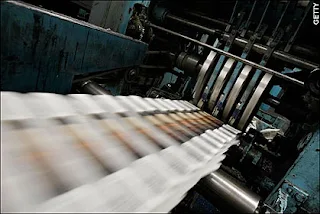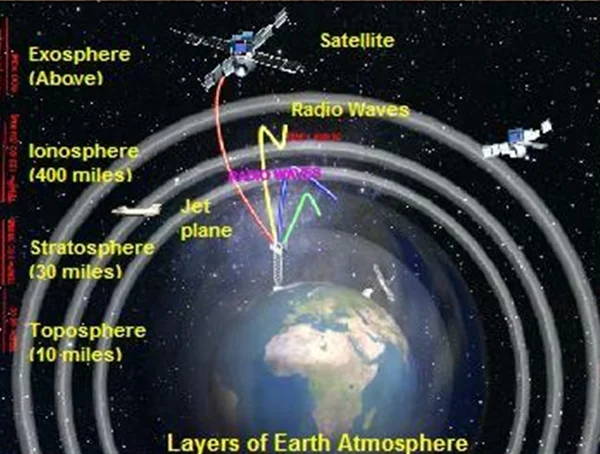PRINTING:
Before the invention of printing , books had to be written by hand . It took months, often years , for a person called a scribe to make a single copy of a book.
Printing in its most simple form was invented in China over 2,000 years ago. Parts of a flat wooden block were cut away to form raised letters or designs. The raised surface was covered in ink and a sheet of paper pressed down onto it to print on the paper. This was very slow and expensive.
JOHANN GUTENBERG:
 | ||
| Picture of Gutenberg |
 |
| Printing press from 1811, exhibited in Munich, Germany |
In the 15th century a German printer. Johann Gutenberg, made it possible to print books faster and cheaper. Instead of carving an entire page out of one block of wood, he carved each letter sparately on small blocks of wood of the same height. These pieces, called caharacters , could be placed in any order to form words and sentences. When the printing was completed , the pieces of type could be used again to make new words. In stead of pressing a piece of paper aganist the linked type by hand, a mechanical press was used to force the paper against the type. Even with this improvement, it was still slow.
WILLIAM CAXTON:
 |
| Picture of William Caxton |
 |
| Picture of Caxton`s Press |
William Caxton was one of the first English printers. After learning the art of printing in Europe in 1471. He returned to London and set up his own press in Westminster. Early books were mainly on law and religion . Caxton also printed books on other subjects . In the 500 years since Gutenberg first used separate pieces of type . Many improvements have been made in both the speed and quality of printing.
MODERN PRINTING:
 |
| Modern Large scale Printing Machine |
Except in special cases , type is no longer set by hand. Computers with keyboards like typewriters assemble pages of type . The typesetting machines produce photographic film of the text automatically from these , printing plates are made, either by moulding or photographically
The plates are used on giant modern printing presses that are run by electricity. These can print thousands of books or newspaper every hour.
 |
| Printing lacks of Newspaper from the Printing Machine |
There are three main methods of printing-- letterpress, photolithography, and gravure. Letterpress uses plates with a raised moulded surface . Photolithography uses plates with a flat surface. These are produced photographically. Gravure printing uses plate with an engraved surface , made by chemical etching.
The two main types of printing machine used are the sheet-fed and the web-fed .In sheet-fed machines, single sheet of paper are automatically fed into the machine and printed individually. In a web-fed machine, a continuous roll of paper is fed through the machine. Both types of machines can print up to four colours on both sides of the paper at once. The paper goes through a different set of plates for each colour. Some machines can also cut up the sheets and fold them into pages.
 |
| Newspaper Printing |
Modern printing machines , like the web-offset press, can print, trim and fold sheets of paper automatically . The type surface is linked by huge rollers and large rolls of paper are fed into the press . The fastest presses, rotary presses, cam print on the both side of of the paper at the same time.
 |
| Modern 5-colour Offset-Printing Machine |
RADIO:
Every hour of every day all over the earth there are millions of radio waves traveling through the air at the speed of the light 300,000,000 meters per second (or 186,000 miles per seconds). In order to hear we must have radio-set, which changes the electrical signals picked up by the receiving aerial into sounds that we can hear through a loudspeaker. These radio waves can be transmitted on many different frequencies or wavelengths.
 |
| Presence of Radio Wave on the Layers of Earth Atmosphere |
At first radio transmitters were a series of dots and dashes representing in Morse Code the letters of the alphabet. Then the invention of the microphone, which changes sounds waves and the electronic valve allowed music and voice to be transmitted by radio.
RADIO WAVES:
There are two types of radio waves.The ground wave can follow the curvature of the earth for a short distance of about 350 km. Ground waves cannot therefore be used for transmitting radio waves between distant countries or even between cities separated by a large distance in the same country.Radio waves can be made to travel much greater distances by being bounced off an electrically-charged layer in the atmosphere. This layer, called the Ionosphrere, is over 80 km above the ground. The reflected radio waves are called sky waves.
When short-wave radio waves can be received by radio sets many hundreds of kilometers from the transmitting sets The waves can then be bounced back to the ionosphere and be reflected back to the earth over and over again in a series of bounces or skips. This is how the radio signal from London is able to be heard in Australia, for example, thousands of kilometers away.
COMMUNICATIONS SATELLITES:
 |
| Presence of Radio Wave and Satellite in the Layers of Earth Atmosphere |
Not all sky waves are reflected by the ionosphere. Some high-frequency waves (short wavelengths) pass through the ionosphere into outer space. When short radio waves are being transmitted over a great distance they have to be reflected back to the earth by a communications satellite. A television programme is broadcast over a great distance by using a communications satellite to reflect the high-frequency waves.
Radio telescopes on earth pick up radio waves from distant stars which can pass through the earth`s atmosphere
Radio broadcasts give us information, music, and other forms of entertainment. Radio is also extremely useful for two way communications between Airoplanes and control towers, and for ship-to-shore links.
Transmitting radio waves .A ground waves following the curvature of the earth for a relatively short distance.
B. Sky waves reflected from the Ionosphere, over 80 kilometers high, and sent back to earth. Several bounces are possible and radio signal may be sent all the way around the world .
C. Sky wave passing straight through the ionized layer.It may continue out into space , getting weaker and weaker ,or be received and transmitted back to earth by a special communication satellite.
D. A communications satellite relays radio waves that pass through the ionosphere back to earth.

RADIO-RECEIVER:
A simple radio receiver .The signal from the transmitting station is picked up by the receiving aerial and is tuned by the circuit containing the variable capacitor and coil . The signal then passes through the diode which detects or demodulates the signal so that it can be heard in the headphones.

The basic radio wave broadcast is called a carrier wave . it is varied or modulated to add the signal .In amplitude modulation(AM) , the strength of a carrier wave is varied . In frequency modulation (FM), the frequency of the carrier wave is varied. Inside the receiving radio , the signals are separated from the carrier wave and turned back into sound.
 |
| Modern Radio and Its Electronic Parts |
TELEVISION:
Television shows still pictures. The pictures appear to move because they are shown oane after the other at high speed.To give this impression. There are thirty pictures per second.
 |
| Modern Color Television with Remote Control |
BLACK-AND-WHITE TELEVISION:
Each picture is divided into 625 lines. In a black-and-white television picture each line contains several thousand bits of light or dark. To make a good picture the lines are separated into tiny bits - as many as 200,000 bits altogether. The television camera contains a signal plate covered with dots of a chemical that are sensitive to light (photosensitive dots).
Each dot corresponds to one of the 200,000 tiny bits. An electron beams crosses the plate line by line and transmits the signals picked up from the dots. Brighter dots cause a stronger signal than darker dots. The signal are amplified and then transmitted.
In the television set in your home the signals are received amplified, and shown on the picture tube (or Cathode Ray tube).
In the cathode ray tube, another electron beam is produced.This beam is made to cross the screen 625 times, so making the 625 lines. At the end of each line the beam flies back and starts the next line. These 625 lines are produced in 1/30 second and each set of 625 lines is called a frame. beam crosses the back of the picture screen it gets weaker and stronger in accordance with the signals picked up from the photosensitive dots in the camera. The tube contains a special fluorescent screen , Coated with chemicals, which glow under the impact of the electron beam. The stronger the beam, the brighter the light. The set also contains a loudspeaker for producing the sound and a synchronizing system
for keeping the sound and picture together.
COLOUR TELEVISION:
Colour television works in a similar way. There are three electron beams each of which carries the signal for one of the colors,red,blue, and green . The screen of the picture tube is coated with 1*1/4 million tiny dots of phosphor , arranged in groups of three. A phosphor is substance that emits light when an electron beam falls on it .Each of the three phosphors used emits only one of the three color red,blue and green . So the blue phosphor emits blue light when the electron beam carrying the blue signal falls on it, and so on .These three colors can be combined in different proportions to give all the other color of the original scene
CABLE TELEVISION:
Instead of being transmitted as waves programmes can be sent along wires. This is the basis of cable television.Customers have their set connected by wire or cable to transmission center and they pay to receive programmes. There is a wide choice as the cable is able to carry many channels.

John Logie Baird was born in 1888 and died 1946.When ill health prevented him from working as electrical engineer he turned to studying television .He produced the first practical system . His system was used for a short while but then better ways of television were found. His system used infrared rays.
 |
| Picture of Baird in front of his Invented Television |
The picture tube , or cathode ray tube, consists of an electron gun which produces the electron beam , and a number of magnetic coils for focusing the beam and making it scan the screen.The screen is coated with a fluorescent substance that emits light when struck by the electron beam.

In color television , light is split into the correct proportions of red green and blue light by using special mirrors and filters . The mirrors reflect their own color and transmit the others. The filters only transmit light of their own color. Each color fed into a separate camera tube, is then converted into an electrical signal.

A color television screen is covered in phosphor dots arranged in trios. The electron beam carrying the red signal is made to fall on one member of the trio which will then emit red light. The blue electron beam must fall on the phosphor that emits blue light , similarly for the green signal.These three lights are seen as a single pinpoint of colored light.
























 Online Movies
Online Movies
No comments:
Post a Comment